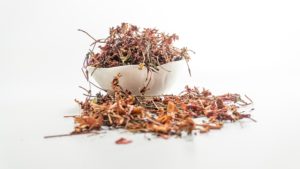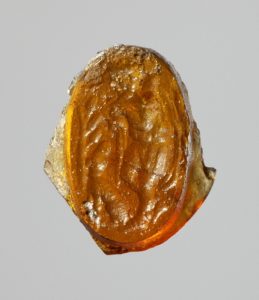A Newbie’s Guide On Vaccines Of Traditional Healthcare
Prevention Is The Cure!
Prevention is better than cure; the statement, although clichéd, categorically holds true. In our own little ways, although we try to keep ourselves safe, healthy and protected from infections and diseases, yet we never actually know where and when we might catch them.
Vaccination Is Ancient
Some of these infections tend to render us unhealthy for the rest of our lives, while some could even prove fatal. Although being cautious is advisable, but it may not always prevent us from catching certain harmful infections. Vaccination therefore happens to be one of the most preventive approaches ever developed by mankind. And thanks to the concept of vaccination, children the world over are leading much healthier lives.
Roots From History
- It is believed that the concept of vaccination was adopted centuries ago, when the Buddhist monks would drink down the venom of a snake in order to immune themselves from the dangers of a potential snake bite.
- Edward Jenner, an English physician, once scratched the arms of a little boy using the pus from cowpox sore in one of the milkmaids over there. He also added small amount of smallpox into it, and amazingly, the boy was immunized from smallpox for the rest of his life. This experiment happened in the 18th century, and it is said that by 1977, smallpox had almost been eradicated from world over [1].
- Few decades later, an antirabies vaccine was developed by Louis Pasteur, an MD, who proved that infections could indeed be prevented by infecting humans with weakened germs [2].
- The invention of polio-vaccine by Jonas Salk and Albert Sabin was a blessing that still continues to offer prevention from a lifetime of physical dependency [3,4].
- Mumps, measles, rubella and tetanus are just some of the other harmful infections that are being cured, by proper and timely vaccination.
Ayurveda And Vaccination
Ayurveda gives well established concepts for the immunity and resistance boosting methods. Immunity is the balanced state of having adequate biological defenses to fight infection, disease, or other unwanted biological invasion. All this while having adequate tolerance to avoid allergy, and autoimmune diseases. This particular science of immunity is explained in ‘Vyadhikshamatva’ (Resistance against disease) in the ancient Ayurveda texts.
About Boosting Immunity
The process of strengthening the immune system was brought about by using the Rasayana and Vajikarana therapies. The immune power varies from person to person and no two persons are believed to have same level of immune strength.
Immunity is broadly classified in two types-
-
Natural Immunity –
This type of immunity is usually inherited immune power that a person gets genetically.
2. and Passive Immunity –
The Passive or acquired immunity is developed after birth based on exposure to various infective organisms [5].
The principles of vaccines for improving the immunity was also described thousands of years ago in Science of Ayurveda in the form of countless formulations for adults and children. “Lehana” (means intake of medicine by licking) is one such traditional special formulation, mentioned in Ayurvedic manuscripts that have been used to boost immunity in the children [6].
The Traditional Form
Powdered mixtures of herbs, gold bhasma, with honey and ghee were given to children.
Some of the traditionally used lehana in Ayurveda for boosting immunity in infants are:-
- One is Suvaran bhasm with kustha (Saussurea lappa), vacha (Acorus calamus), honey and cow’s ghee
- Also, Suvaran bhasm with paste of brahmi, shankhpushpi, with honey and cow’s ghee
- The Suvaran bhasm, arkpushpi, vacha, honey and cow’s ghee
- Suvaran bhasm, khaidarya, sweta durva, etc.
Suvarna Prashana
- This was believed to be the first immunization given immediately after birth even before umbilical cord was cut and the baby was breast-fed by the mother.
- Gold powder was rubbed with honey and ghee and given to the baby to lick.
- This has been regarded to as to increase immunity (against bacterial as well as viral infections), boost Intelligence, digestive fire as well as the physical power in the children.
Panchagavya Prashana
This is practiced once every year during July and August during which the vaccine Viraemia is alleged to be at its peak in the cow. It works as an oral vaccination and every year a repeat dose can work as a booster dose.
- Fresh Cow Dung – Enteric organisms plus vaccinia virus
- Urine – Acidic, antitoxic attenuation of microbes
- Milk – Medium to protect attenuated organisms
- Curd – Medium to protect attenuated organisms
- Ghee – Enteric coating
- Copper Vessel – Isolation Attenuation
Ayurveda Counsels Preventive Healthcare Solutions
- Recently a US patent has been awarded to Serum Institute of India and University of Pune for using Ashwagandha as a vaccine adjuvant. An adjuvant is a substance increases the efficacy of vaccination.
- Ayurveda, the great Indian science of traditional healthcare and well-being, strongly supports the whole idea of immunization [7].
- Its prophylactic (preventive) approach advocates maintaining optimum health by adopting some rather practical techniques.
What Ayurveda Recommends?
- Nidan parivarjan suggests avoiding the very carriers of infection. For example, polluted water in order to stay safe from any kind of water-borne disease.
- Dinacharya, as the name suggests, refers to a healthy morning regimen.
- Ritucharya talks about adapting our lifestyles according to the seasons.
- Avoiding viruddha ahaar or the incompatible diet is another idea suggested by Ayurveda in order to stay healthy by avoiding unhealthy food, etc.
Broad Spectrum
- As it can be observed, the approach of Ayurveda towards prevention is not limited to vaccination alone.
- This, in fact, is one of the most realistic approaches to guard ourselves against diseases.
- And this is besides taking regular vaccination.
- From the scientific point of view, the Ayurvedic products are rich in antioxidants.
- Antioxidants in turn serve as vaccines [8].
References
- Riedel S (2005) Edward Jenner and the history of smallpox and vaccination. Proc (Bayl Univ Med Cent) 18: 21-25. [Ref.]
- Smith KA (2012) Louis Pasteur, the Father of Immunology? Front Immunol 3: 68. [Ref.]
- Oshinsky DM (2005) Polio: An American Story, Oxford University Press, Oxford, UK. [Ref.]
- Kluger J (2006) Splendid Solution: Jonas Salk and the Conquest of Polio. Berkley Trade, New York, USA. [Ref.]
- Tripathi JS, Singh RH (1999) Concept and Practice of Immunomodulation in Ayurveda and the Role of Rasayanas as Immunomodulators. Anc Sci Life 19: 59-63. [Ref.]
- Rathia S, Kori VK, Rajagopala S, Patel KS (2015) Swarna Prashana-A Immuno-Booster in Ayurveda. Int J Ayu Pharm Chem 4: 305-315. [Ref.]
- Tirtha SS (2007) The ayurveda encyclopedia: Natural secrets of healing, prevention and longevity. Ayurveda Holistic Center Press, Chicago, USA. [Ref.]
- Gowder S (2016) Antioxidants and Vaccines. Int J Vaccines Vaccin 2: 00020. [Ref.]
Watch Video: How to Build your Natural Immunity
About the Author:
Dr Sonica Krishan is Author and Speaker in the areas of Healthy and Joyous Living through Ayurveda, Meditation, Yoga and other Contemplative practices. She is a leading Ayurveda Professional in India. She is also Health Writer, Columnist, Editor, Ayurveda Consultant and Holistic Healing Coach. Dr Sonica is open for National as well as International Collaborations with interested people / institutions in fields of Ayurveda, Meditation and Yoga.
Dr Sonica Krishan’s Books are available at Amazon







